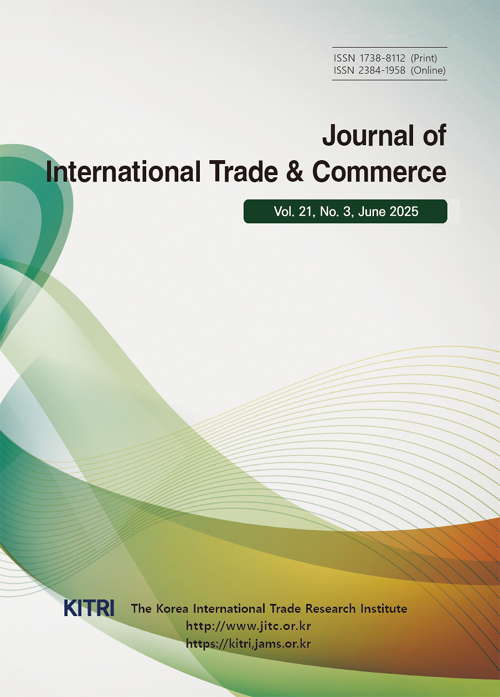학술논문
Portfolio Capital Flows and the Persistence of the U.S. Current Account Deficit
이용수 6
- 영문명
- 발행기관
- 한국무역연구원
- 저자명
- Gab-Je Jo
- 간행물 정보
- 『무역연구』제21권 제3호, 69~82쪽, 전체 14쪽
- 주제분류
- 경제경영 > 무역학
- 파일형태
- 발행일자
- 2025.06.30

국문 초록
Purpose - Amid increasing concerns over the sustainability of the U.S. current account deficit, this study examines its viability by analyzing the relationship between the U.S. current account deficit and capital inflows into the United States. This focus is motivated by the notion that the sustainability of the U.S. current account is closely intertwined with the sustainability of its external debt.
Design/Methodology/Approach - To achieve this objective, the analysis employs impulse response functions and variance decomposition based on a Vector Error Correction (VEC) model. The empirical analysis covers the period from the first quarter of 1990 to the third quarter of 2024.
Findings - The impulse response function analysis reveals that the U.S. current account responds significantly and negatively to positive shocks in equity capital inflows, U.S. labor productivity, and U.S. asset returns. The variance decomposition analysis indicates that fluctuations in equity portfolio inflows and U.S. productivity are key drivers of variation in the U.S. current account, thereby corroborating the findings from the impulse response function analysis. This implies that the United States has been supported by a highly productive economic structure over a prolonged period, with strong productivity providing investors with reliable returns. These returns, in turn, have attracted substantial equity portfolio capital inflows, ultimately leading to sustained current account deficits.
Research Implications - These findings imply that sustained equity capital inflows and productivity enhancements may provide structural support for the ongoing current account deficit, thereby mitigating immediate concerns and indicating potential long-run sustainability.
영문 초록
목차
Ⅰ. Introduction
Ⅱ. Literature Review
Ⅲ. Data and Model
Ⅳ. Results and Discussion
Ⅴ. Conclusion
References
해당간행물 수록 논문
참고문헌
최근 이용한 논문
교보eBook 첫 방문을 환영 합니다!

신규가입 혜택 지급이 완료 되었습니다.
바로 사용 가능한 교보e캐시 1,000원 (유효기간 7일)
지금 바로 교보eBook의 다양한 콘텐츠를 이용해 보세요!


